If you’re a narrowboater, you don’t need reminding how fantastic the UK canal system is. With around 4,700 miles of navigable canals in the UK, routes are aplenty, and the scenery is magnificent.
But perhaps the only thing more magnificent than the UK canal system’s scenery is its history.
The UK canal system has played and still plays a very important role in the country’s DNA. In fact, Britain was the first country in the world to develop a man-made water network, and although it’s not relied upon as much nowadays, its enduring history and heritage will always remain.
Join us for an in-depth look at the UK canal system—past and present.
History of the UK canal system
Roman canals
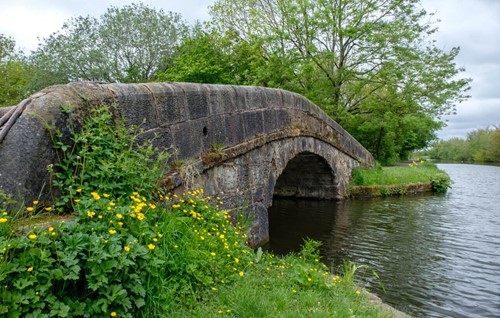
The origins of the UK canal system are often disputed. Many believe the waterways first began following the Industrial Revolution—and while, yes, a sea of canals (pardon the pun) was developed during this period, canals can be traced back as far as Roman times.
Back then, they were used mainly for irrigation and connecting water to drier areas. Some of the earliest Roman canals include the Car Dyke, Foss Dyke, and the Bourne-Morton.
Medieval canal projects
The canal system continued its growth and development throughout the Middle Ages, becoming increasingly useful for transporting goods around the UK.
Then King of England, Henry I, was a huge admirer of the canal system and called for major investment and renovation work on some of the pre-existing Roman canals. This included improvements to towpaths at some naturally occurring waterways.
Related: History of Britain’s Canals
The Industrial Revolution and Canals
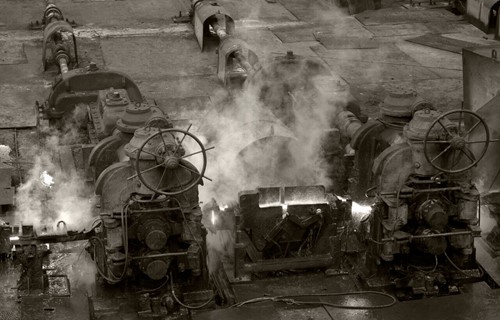
As you might expect, the transportation of industrial goods along the canal network became increasingly important during the Industrial Revolution.
In fact, the UK canal system owes much of its development during this time to the sheer volume of industrial demand.
Also born from this demand was the concept of ‘pure’ canals. Pure canals were built solely to ease the transportation of goods between cities and towns. The first pure canal, Newry Canal, Northern Ireland, was completed in 1741.
The first pure canal in England was the Bridgewater Canal. The first stretch of this opened in 1761 and connected Worsley to the city of Manchester. Those familiar with Manchester will know that the Bridgewater Canal still flows through the city today and is an important part of the canal system in the North West.
Related: The Development of Canals in the Industrial Revolution
The Golden Age
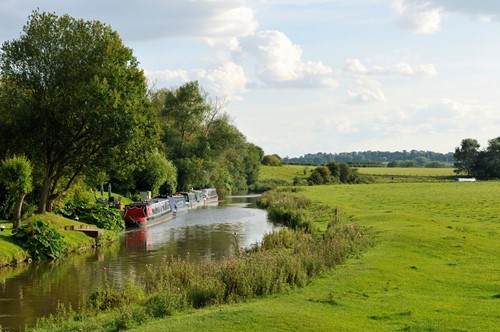
We then enter what many refer to as the Golden Age of British canals—the 60-year period from 1770 to 1830.
More specifically, the period between 1790 and 1810 was even dubbed Canal Mania. During this period, in particular, the UK canal system was subject to a substantial rise in building work.
Innovative water management systems such as locks and navigable aqueducts were also first introduced during this period. By 1830 and the end of the so-called Golden Age, the UK canal network had grown to around 4,000 miles in length.
Related: Canals 1750 to 1900
The UK canal system in modern times
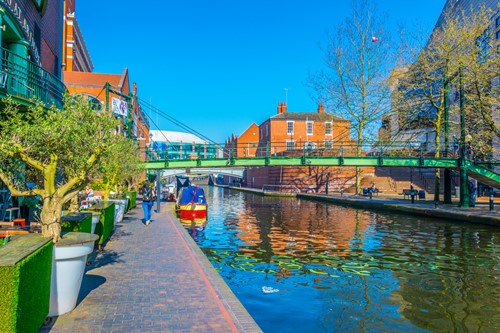

After World War I, canal usage became more of a recreational activity for families rather than solely for business and trade purposes. Later, after World War II, canals became even less relied upon for transporting goods, and much of the UK canal system was nationalised in 1948.
Today, UK canals stand partly as a nod to the nation’s industrial past, but they’re enjoyed for different reasons, too.
As a narrowboater, you’ll already be pretty clued up on canals, but if you’re planning to tick a new region off your list, we’ve got you covered. We’ve picked out a few of our favourite canals up and down the UK.
Canals in London and the South East
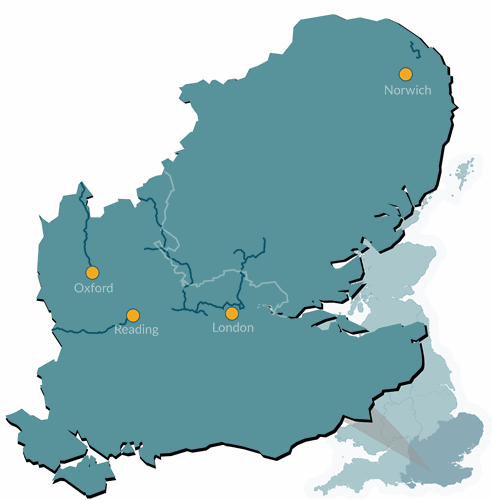
Though the bulk of the UK canal system was initially built in the industrial Midlands and north of England, we begin our tour in the capital and surrounding counties.
London is a major port city, and as early as 1790, at the start of Canal Mania, it was linked to the national canal network via the River Thames and the Oxford Canal. Various waterways have been built since then to make the region’s canal system what it is today.
Hertford Union Canal
At just 2km long, the Hertford Union Canal runs alongside Victoria Park in Hackney, northeast London. Arrow-straight, this canal is an ideal walking and cycling route from Mile End to the Olympic Park and is a vital shortcut from Regent’s Canal to the River Lee.
Regent’s Canal
The Regent’s Canal provides a sense of calm amid the bustle of London. Sailing down this canal from the capital is like stepping into a different world.
Flowing for almost 14km through Little Venice, Regent’s Park, and Camden, it was once London’s best-kept secret. However, it’s not so secret today.
Grand Union Canal
The Grand Union Canal is the longest in the UK, stretching 137 miles from London to Birmingham.
It passes through the beautiful countryside and idyllic villages of Northamptonshire and Warwickshire along the way before arriving in Birmingham’s suburbs.
Did you know? It would take you 74 hours (more than three days) to cruise the entire length of the Grand Union Canal non-stop.
Canals in the South West
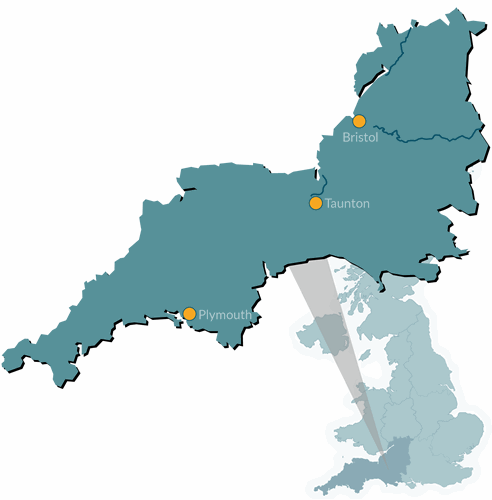
The South West of England is another important hub in the UK canal system, facilitating a connection to London from cities like Bristol and Bath.
This region is also home to the impressive Exeter Ship Canal. This was first constructed in the 1560s, predating Canal Mania, making it one of the oldest constructed waterways in the UK.
River Severn
Although technically a river rather than a canal, how could we not mention the Severn?
Flowing for 354km through several counties (and Wales), it’s officially the longest river in Britain, encompassing Shrewsbury, Shropshire, Worcestershire, and Gloucester, before discharging into the Bristol Channel.
Kennet and Avon Canal
Spectacular landscape awaits when you sail the Kennet & Avon. At 140km and with 104 locks, the Kennet and Avon Canal connects the Bristol Channel to London, passing the stunning heart of Wiltshire and the Cotswolds.
Gloucester and Sharpness Canal
At nearly 10m across at its widest point, the Gloucester and Sharpness Canal was once the world’s broadest and deepest canal. Even today, its sheer scale and craftsmanship are a sight to behold. You can enjoy views of the Severn Estuary, the Forest of Dean, and the Cotswolds from the canal itself.
Canals in the East Midlands
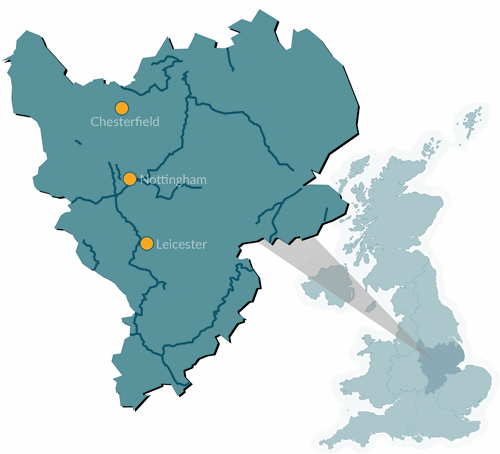
As we move towards the Midlands, we begin to see traces of the UK’s industrial past reflected heavily in the waterways—both in the East and West.
River Trent
Again, despite being classed as a river, the River Trent is one of the UK’s greatest waterways. Spanning just under 300km, it’s the third-longest river in the UK. You’ll find the Trent flowing through the city of Nottingham, the nearby market town of Newark, and the more rural Trent Vale.
Fossdyke Navigation
You may well recognise this one from earlier on. That’s because the Fossdyke Navigation dates back to Roman times, making it one of the oldest canals in the UK.
It’s thought to have been built around 120 AD, and today, it links the small village of Torksey with Lincoln.
Ashby Canal
This canal’s most notable feature is that it has no locks, making it the perfect jaunt for first-time narrowboaters.
Interestingly, the canal is named after the Leicestershire town of Ashby-de-la-Zouch, but it doesn’t actually flow through it.
Canals in the West Midlands
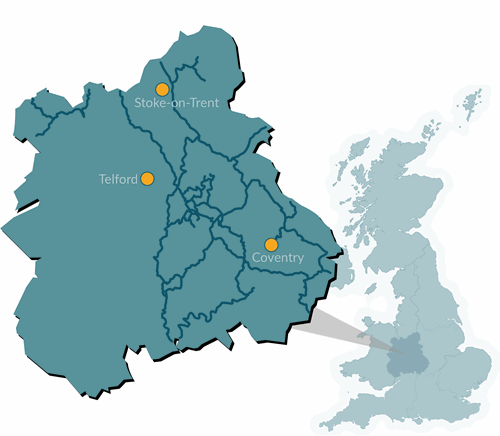
The next region on our tour is home to some of the UK’s most notable canals.
Birmingham, the UK’s second-largest city after London, famously has more miles of canals than Venice, and more than half of the city’s 1.2 million-strong population live within walking distance of a canal.
Stratford-upon-Avon Canal
In case you didn’t know, Stratford-upon-Avon is the birthplace of William Shakespeare, and anyone that’s ever visited will tell you how beautiful it is.
Running from Birmingham’s suburbs to the centre of the town, this 41km stretch of canal then joins the famous River Avon at the Bancroft Basin—a stone’s throw from the Royal Shakespeare Theatre.
Birmingham and Fazeley Canal
Historically fenced off from the hustle and bustle of Birmingham, this canal was given a new lease of life in the 1980s.
Beginning in the heart of the city centre, today, the Birmingham and Fazeley Canal flows past many of the city’s main landmarks before meandering out to the surrounding countryside.
Stourbridge Canal
Situated in the heart of the Black Country, just outside Birmingham, lies Stourbridge—a town famous for its glassmaking industry.
Historically, there were more than 20 glass factories in Stourbridge, which was once world-famous for its cameo glass and cut crystal production. The Stourbridge Canal is a must-visit for anyone interested in the UK’s industrial roots.
Related: The Story of Stourbridge Glass
Canals in Wales
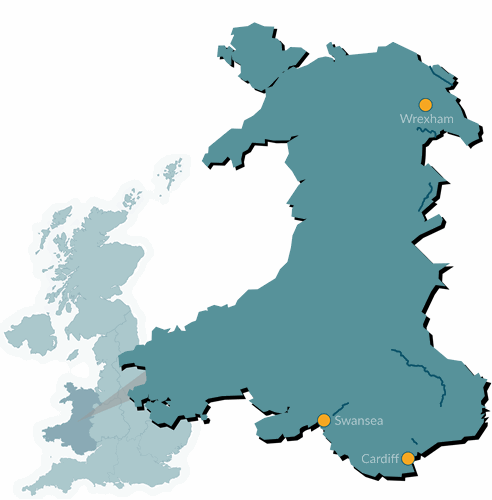
Wales’ history is rooted in the UK canal system. During the early stages of the Industrial Revolution, demand for raw materials, such as lime and iron, from Wales skyrocketed.
As a result, new canals were needed to navigate the hilly terrain between Wales and England and offer a transport link for resources.
Today, Wales is a nation renowned globally for its scenery, and the canals play a big part in that.
Llangollen Canal
Straddling the England-Wales border, the impressive Llangollen Canal attracts visitors from far and wide thanks to the picturesque countryside that surrounds it.
The Industrial Revolution still echoes around these parts, too. The canal is home to the Poncysyllte Aqueduct—a masterpiece of engineering. Awarded World Heritage Site status in 2009, it’s the tallest navigable aqueduct in Britain.
Montgomery Canal
Connected to the Llangollen is the Montgomery, or the ‘Monty’, as locals affectionately know it; the Montgomery Canal is a must-visit if you’re interested in wildlife. Otters and water voles are regularly spotted along the route, which also borders several nature reserves.
Monmouthshire and Brecon Canal
As we head to Wales’ beautiful south, we meet the Brecon Beacons National Park, where the Monmouthshire and Brecon Canal meanders peacefully, following the line of the Usk Valley.
The northern section of this canal also forms part of the Taff Trail Long Distance Footpath, which stretches all the way down to Cardiff.
Canals in the North West
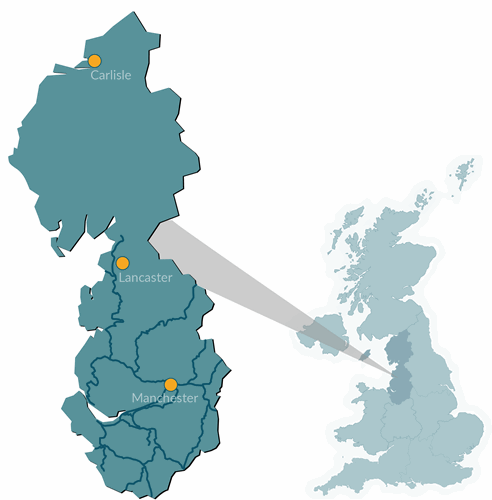
The North of England played a pivotal role in the Industrial Revolution, with Manchester and Liverpool, in particular, being the region’s main driving forces.
This dominance, however, created a tension between the two great cities that arguably still exists today. In the late nineteenth century, the ship workers of Manchester became unhappy with the structure of the Liverpool Docks. As a result, they built the Manchester Ship Canal in 1894, which turned Manchester into a major inland port in its own right and stole a lot of trade from Liverpool.
This canal is just one of many spectacular waterways across the North West. There’s also…
Rochdale Canal
Straddling the Pennines from Manchester up to Sowerby Bridge, the Rochdale Canal is a steep but magnificent journey.
The canal was opened in 1804 and was the first of three trans-Pennine waterways. It hasn’t always been navigable, though, and after an extensive restoration period, it reopened to boats in 2002 after more than 50 years without them.
Manchester, Bolton and Bury Canal
Originally flowing north from Salford along the River Irwell, the Manchester, Bolton and Bury Canal provides a rare glimpse of green space to counteract northern Manchester’s urban, industrial landscape.
The original canal structures hint at the region’s industrial past, while the tranquil waters surrounding Bolton and Bury are some of the best fishing spots in the country.
Peak Forest Canal
This 24km wind through the Peak District is one of the UK canal system’s most scenic spots.
If you’ve ever hiked in the Peak District, you’ll know what to expect. The Peak Forest Canal runs alongside the gorgeous River Goyt for much of its route, with the Goytside Meadows nature reserve near New Mills home to a sea of floral beauty.
Canals in Yorkshire and the North East
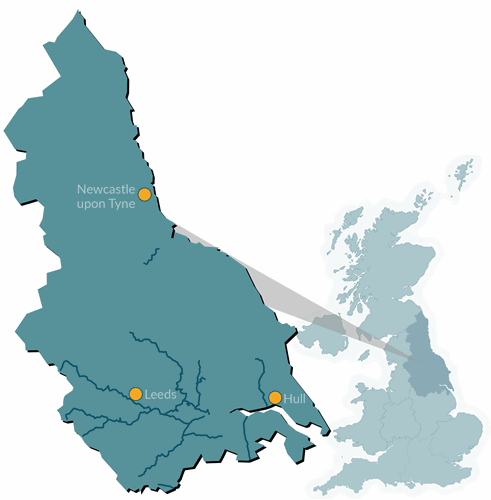
The Industrial Revolution saw cities such as Leeds, Sheffield, and Bradford develop large textile and coal mining industries, which led to the development of further canals for transport purposes.
As early as the seventeenth century, intricate canal-building work was being done in this part of the UK, spreading from the southern Yorkshire Dales to the England-Scotland border.
Several hundred years later, its canals are just as impressive.
Pocklington Canal
This canal was one of the last to be built in the region, opening in 1818, and it’s one of the UK’s top canals for wildlife spotting.
Although only 8km of it is navigable and it contains just three working locks, much of the canal is designated as a Site of Special Scientific Interest and is the perfect spot for kingfishers and dragonflies.
River Tees
Yes, it’s a river—but we couldn’t ignore it.
Flowing from the northern Pennines to the North Sea near Middlesbrough, the River Tees is believed to have been formed more than 18,000 years ago, dating back to the Ice Age. It’s been integral to North East trade since medieval times.
Huddersfield Narrow Canal
The Huddersfield Narrow Canal is home to the Standedge Tunnel—the longest, deepest, and highest canal tunnel in the country (three-and-a-quarter miles long, to be precise)—so it’s not for the faint-hearted.
Again, the summit of this canal, which scales the Pennines, is the highest canal point in Britain.
Canals in Scotland
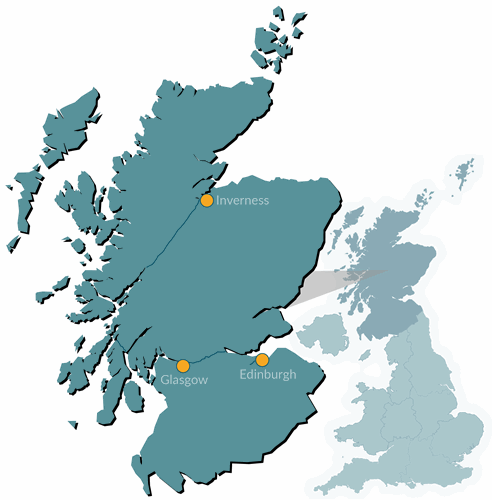
Scotland’s 220km canal system is steeped in history and, again, played an important role in the Industrial Revolution north of the border. Today, Scotland’s canals have been given Scheduled Ancient Monument status, with many associated buildings also listed.
You’ll find the world’s first and only rotating boat lift here, too: The Falkirk Wheel, which links the Union and Forth and Clyde Canals. At 35m tall, it’s the equivalent height of eight double-decker buses.
Caledonian Canal
Boating on the Caledonian Canal is unlike any other experience in the UK. The canal provides man-made links to the natural beauty of Scotland’s scenic locks, making this the perfect way to enjoy Scotland in all its glory.
Constructed in the early nineteenth century, the canal connects the East coast at Inverness to the West coast at Corpach, near Fort William.
Union Canal
Sometimes referred to as the Edinburgh and Glasgow Union Canal, this canal spans 50km between Falkirk and Edinburgh and was historically used to transport coal to the capital.
After falling into a period of decline in the 1960s, today, it’s connected to the Forth and Clyde via the Falkirk Wheel, making it a popular spot for boaters once again.
Forth and Clyde Canal
A tranquil 56km cruise through central Scotland, the Forth and Clyde takes in a gorgeous blend of the nation’s industrial heartland and its green corridors.
The canal runs from the River Carron at Grangemouth to the River Clyde at Bowling.
Canals in Northern Ireland
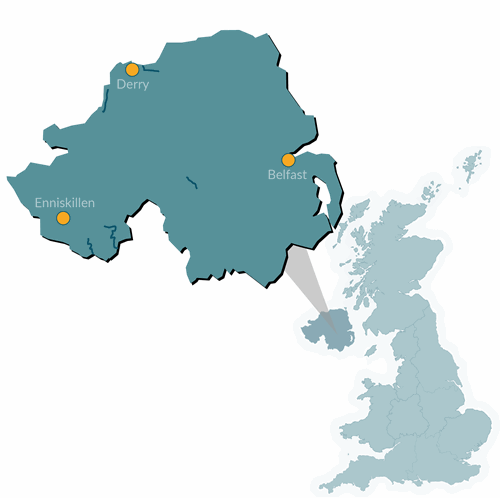
The phrase ‘hidden gem’ couldn’t be more apt than when referring to Northern Ireland’s canals.
Important spots for leisure, sport and heritage, the waterways of Northern Ireland have played an integral role in shaping the country’s modern life and culture.
Although not as widely renowned for its canal system, this part of the UK is still well worth visiting.
Coalisland Canal
Sometimes referred to as the Tyrone Navigation, the Coalisland Canal was constructed in 1733 and was vital in transporting coal to Dublin. Although relatively small—7.2km, to be precise—this canal hosted a small boat rally in 2008.
Strabane Canal
A short walk from the village of Ballymagorry, this canal once connected the market town of Strabane to the River Foyle.
Today, the Strabane Towpath is a beautiful walk, with stunning views of the River Foyle and across to Donegal—the northernmost county of the Republic of Ireland.
Shannon-Erne Waterway
The Shannon-Erne Waterway is a unique 63km combination of river, lake, and still-water canal, linking the River Shannon in the Republic of Ireland to the River Erne in the North.
Restored and reopened in the mid-1990s, the waterway unlocked beautiful countryside unseen for decades and added various new fishing spots to the map.
To put it simply—the Shannon-Erne is the pinnacle of Irish tranquillity.
Specialist narrowboat insurance from Insure4Boats
Feeling inspired to explore more of the UK canal system on your narrowboat? You might also want to consider getting narrowboat insurance.
With Insure4Boats, specialist narrowboat insurance policies are designed to protect your boat against theft, accidental damage, malicious damage, and salvage charges.
You can also add Third-Party Liability, additional protection for the contents of your narrowboat, and cover for accidents and injuries. Click below to find out more and get an online quote.
Related
The Best Narrowboat YouTube Channels
Exclusive Q&A With Narrowboat YouTube Robbie Cumming
The Best Narrowboat Accessories To Have On Board
Please note the information provided on this page should not be taken as advice and has been written as a matter of opinion. For more on insurance cover and policy wording, see our homepage.


